The Rural Commons Festival explored the open concept of rural commons through the format of an itinerant festival. The festival was co-designed and co-led by multiple community-based stakeholders in three alpine valleys. Over three week-ends, with over 30 different activities the festival explored a long tradition of practices of collective care for rural habitats. It invited to care for historical and emerging commons as a way to locally and collaboratively deal with global challenges.
Marie Sklodowska-Curie Indivdiual Fellowship of one of the co-curators (Bianca Elzenbaumer)
The Rural Commons Festival explores the open concept of rural commons through the format of an itinerant festival that is co-designed and co-led by multiple community-based stakeholders. The festival investigates practices and concepts of rural commons in rural and mountain areas of Italy and Europe by sharing competence and experiences related to the ecological and social commons. The festival focuses on territories, where there is a long tradition of collective management of natural and built resources and cooperative models of doing economy. Commons can be defined as a collective response to shared needs and desires expressed by a community.
The first instance of the festival has been co-designed between 2020 and 2021 and led to an itinerant festival in three alpine valleys of the Trentino region in the Italian Alps. It took place on three consecutive week-ends in May and June 2021. It was organized in collaboration with 34 cultural organizations and social entrepreneurs as well as in collaboration with 3 municipalities and 3 research institutes and became an important moment of encounter and exchange, especially in the time of forced distance due to the pandemic. The activities of the festival aimed at reconnecting old and new rural practices, to learn by doing, to explore new methods and tools of a collective care of different rural and mountain areas.
The activities of the festival where of a broad spectrum: 12 walks guided by rural practitioners, 3 hands-on micro-architecture workshops to valorise space through community action, 3 music concerts, 3 academic symposia and multiple interventions by scholars specialized on historical, legal and cultural aspects of commons in rural areas. Through this wide range of activities, the organizing committee aimed at opening multiple access points to the topic of rural commons as the care for them can be crucial in finding an ecological equilibrium between natural processes and human activities.
Please highlight how the project can be exemplary in this context
In terms of environmental sustainability our aim is to support people in revaluing the relation between themselves, their territory and their natural environment. We thus focus on showcasing and exploring collective practices of care for multispecies habitats in rural areas. These practices range from regenerative agriculture to eco-social tourism models, from the reuse of built up structures to environmental education for children. We organize DIY micro-architecture workshops recycling abandoned or undervalued places to regain them as public spaces for the community in each location (e.g. an abandoned monastery, a train station, a drystone wall).
In terms of economic sustainability, we focus on showcasing and supporting democratic practices and business models that have the well-being of people and nature at their core. Moreover, here we focus on exploring practices that are open to being co-shaped by the local community, such as community cooperatives, initiatives that adopt a radical transparency to their business operations and practices that place a large amount of attention to how their activities impact non-human beings (such as animals, plants, soil life).
In terms of multispecies habitat valorisation, we focus on elevating the exceptional biodiversity reservoirs represented by dry stone walls, biotopes in built up areas, agroecolgical growing practices, community gardens, and commonly managed forests and pastures. In doing so we center on the role humans play in keeping such biodiversity reservoirs functioning in the years to come through their caring contributions through everyday practice.
In the organization of the festival, we also focus on sustainability, such as serving locally sourced - mainly vegetarian - food, local wood for DIY workshops, festival decoration made of repurposed materials, tab refill stations for water, no single-use plastic, no flights for key guests, online international symposium, a minimum of printed materials, no gadgets.
Please highlight how the project can be exemplary in this context
In terms of aesthetics and quality of experience our focus is on conviviality, authenticity and participation. In 2021, after more than a year of various lockdowns and social isolation, we made sure to organize the majority of the activities outdoors in order for people to be able to socialize with a much reduced fear of Covid-19 and to be able to be together without masks. We were the first event in our region to take place after the lockdown was lifted and made a huge effort to make it happen physically, taking all possible precautions while still focusing on creating convivial gatherings. So we organized three week-ends of multiple outdoor activities: thematic walks guided by local initiatives, evening music events, outdoor gatherings and workshops, outdoor DIY building workshops.
In terms of authenticity, we want the visual communication of the festival to be solar and inviting with an aesthetic rooted in local culture. We thus commissioned a young group of female graphic designers working in one of the valleys of the first festival. They worked with reduced symbols of our rural space, which were hand-drawn black on bright yellow. This choice allowed us to then work with two students in Eco-Social Design at the University of Bozen and local citizen groups to self-produce more symbols and communication tools in order to create a festive space in each location of the festival on a tiny budget. We thus co-created an enticing contemporary visual language of the rural.
One of the moments of the festival is dedicated to self-constructive workshops with designers and architects to build with wood temporary useful and beautiful elements that could contribute to create and improve common spaces. What was built in 2021: an infrastructure for hosting events in an abandoned monastery, a stair that could be a public arena for taking community decisions in an abandoned agricultural field, a multifunctional platform outside a collectively reused space of the train station.
Please highlight how the project can be exemplary in this context
In 2021, we co-designed and co-organised the festival together with 34 local citizen groups, each dedicated to a different cause in their territory. While our co-design meetings and preparatory walks in each territory gave shape to the contents of the festival, our online gatherings between all three valleys created multiple new connections at regional level.
The co-design process was shaped by a transdisciplinary approach (environmental economics, design research and landscape and architectural design intersecting with local expertise). The process paid attention to existing power relations both within the community and between community, academia and public authorities.
We made sure that all spaces and activities were physically accessible by people with limited mobility. For those affected by Covid-19 or not able to join physically for different reasons such as travel restrictions, all activities were also broadcast online on platforms that allowed people to interact. Physical tools, such as the commons map - which traveled with us from valley to valley to map the spaces and practices people perceive as commons - was also transferred online.
In terms of affordability, we made sure that all activities were free and only in the walks organized by the local associations, people were invited to make a small donation if they could.
We also paid attention to keeping a gender balance both in the organizational committee and in the invited speakers. When it comes to issues of commons and regional development this is important as they are still very male dominated domains.
We also made sure that all activities were suitable for people with children and also organized activities specifically tailored to children. Moreover, we involved young people in the organization of the music evenings and integrated the festival with already existing youth activities. This way we managed to create a festival that was intergenerational and engaged with multiple perspectives.
Please highlight how this approach can be exemplary
The Rural Commons Festival naturally integrates the dimensions of sustainability, beauty and togetherness in all of its aspects. The diverse organizational committee enacts collective decision making processes and is guided by the desire to create a festival that champions collective practices that work towards sustainability and that contribute to the beauty of local life.
In choosing the spaces where to carry out the festival, we focus on locations that have been transformed through collective action with an ethos of sustainability and a desire for creating beauty in unexpected places. In 2021, these spaces were: an abandoned monastery, an abandoned building of a train station and an abandoned valley, all of which had been reclaimed and reactivated through community-led actions over the last 5 years. Moreover, with the walks we focus on areas that have also been reclaimed from abandonment and made available for the community as beautiful spaces of encounter, such as a crag for climbing, a former gravel extraction site, a mountain refuge, an archeological site, a reclaimed motorbike track.
In the activities of the festival we focus on sustainability and conviviality in order to create space for communal care.In 2021, we just came out of a long winter and spring in lock down and so we created a dense programm of 9 days of small events proposing a wide range of formats. This way we made sure that people felt comfortable to meet again.
In the visual and spatial design of the festival, we emphasize collective action: from making a common map of the commons of all territories that the festival evolves in to creating micro-architectures that leave a visible trace also beyond the festival, from playing with visual elements together with participants to proposing experimental community-led theater formats.
We bring into dialogue collective initiatives that care for their territory in multiple forms across different geographical areas. In 2021 these were three valleys in the Italian Alps, which are located in the same region, but rarely connect to each other. This has strengthened the ability of the communities involved to address pressing ecological and social questions by drawing on peer-to-peer support and learning from their immediate neighbors.
We also bring renewed attention to collective practices of care for land and nature. Such practices have a long tradition but have gradually been abandoned and discredited despite their enormous regenerative effect both on social cohesion and the natural environment. With the festival we shine light on the attractiveness and potential of innovation of such practices in our times of ecological crises and growing social divides.
The active collaboration with the local public authorities makes sure the potential of collective care for a territory is also communicated to them. By showing public authorities the attractiveness as well as effectiveness of collective practices of care, we aim at strengthening the support for existing but also newly emerging practices as they defy the logic that citizens are unable to be engaged drivers of local sustainable development.
Moreover, we raise awareness and showcase examples of how care for the commons can be part of a rural community’s livelihood even in contemporary times. In doing so, we make sure to focus people’s attention on their interdependence with the natural environment: there can be no thriving human community, when the ecological balance is lost. Caring for rural commons through multiple inventive and creative human practices is thus explored as a key element for a thriving future.
Please also explain the benefits that derived from their involvement.
The Rural Commons Festival in 2021 was the result of a co-design and co-organisation process. This process involved four female researchers working with participatory research methods, two MA students in Eco-Social Design of the Free University of Bozen (IT), 34 citizen groups and three municipalities. The communities of three alpine valleys - Giudicarie, Vallagarina and Terragnolo - were at the center of the festival: all activities revolved around showcasing and strengthening their practices of collective care for the territory, also fostering mutual exchange between diverse experiences coming from outside the region
The festival has been organized over the course of almost one year during which site visits took place, initiatives where networking between them and ever more initiatives were brought on board. This collective process determined not only how each commoning initiative wanted to present itself at the festival, but also the external guests to be invited. This way they were supported to bring in expertise and points of view that could support the local initiatives in fine-tuning and innovating around some aspects they currently struggle with (such as a male-dominated culture within some forms of commoning, understanding themselves as part of a historical lineage of communities caring for land and people, eco-social business models that can be connected to a commons).
The decisions regarding the festival are taken in biweekly meetings in each rural area, while coordination meetings take place once a month. This process, but also the festival itself, serves as an informal school of commoning in which democratic processes are tested, new ideas are discussed and the latest scientific findings around commons and their role in rural habitats are probed.
The project engages with global challenges around destructive rural-urban linkages, where the rural is considered as a mere resource provider and absorber of externalities produced by cities. It also engaged with mismanagement of rural areas through habitat destruction resulting in biodiversity loss and massive CO2 production. Moreover, it addresses issues of rural exodus, which goes hand in hand with the loss of local knowledge and the potential of regenerative local action.
It addresses these global challenges by showing and exploring the positive effects collective actions of care have on community cohesion, attractiveness of rural areas and on the ecological equilibrium. By exploring practices of commoning, i.e. of activities taking place collectively and governed through horizontal processes of decision making, the festival also expands ideas and expertise around values of democracy and what it means to be an cohesive, yet open and inventive community. Each community finds its own ways of commoning and of maintaining as well as creating commons. This way each community is embedded in local solutions, which can however be shared with others as these solutions are tied to practical experiences, which can serve as sources of inspiration and innovation for others. This diversity in approaches is important to find locally relevant and effective ways to navigate through social and ecological crises.
Over the last decade, much exciting and empowering work has been done in relation to commons in urban areas as ways to create inclusive and sustainable cities. However, a discourse on contemporary commons in rural areas has been missing. The festival is a first step to close this gap and to explore the enormous potential of commoning practices in rural spaces.
The festival’s focus on contemporary approaches to commons, combined with an attention to multispecies care, brings a new perspective to how local inhabitants envisage to tackle challenges in rural areas. With this approach the festival focuses both on innovating and re-empowering traditional commoning practices, but also to bring new ideas and approaches to rural and mountain areas that could inspire new actions as well as regenerative adjustments to current collective practices.
By coming up with an itinerant format of the festival, we manage to connect communities and rural areas who normally do not meet. Moreover, by proposing a festival with a wide range of public formats, the potential of commons and collective practices is brought to a wide, intergenerational audience. By creating exchange and dialogue among very different practices of care under the umbrella concept of commoning practices, many local initiatives are invited to see their own actions not as isolated acts and lone struggles against global challenges, but as part of a wider network of actors who all stand in for creating presents and futures that are sustainable, beautiful and inclusive.
Please provide clear documentation, communication of methodology and principles in this context.
The format of the festival, as well as its thematic focus, can be transferred to rural habitats all across Europe. In fact, land that has historically been managed as a commons is present all across Europe as are communal practices that are for people and the land - even if at the moment they are often invisible and discursively marginalized.
Also the concept of collective practices of care can be taken as a lens of engagement for a wide range of practices in different communities, locations and cultural contexts. In fact, the way we framed rural commons means that in each location they will take a unique form as they adapt to local culture, geography, ecology, and space. In our approach care is extended also to care for the material and immaterial heritage, the natural environment and the ecologies rural communities are part of. This inclusion challenges human-centric notions of sustainability and good life in ways that foster rural practices that care for humans’ interdependence with all other living beings.
The format of the festival is conceptualized in concentric circles: a core of activities without which it cannot be a festival (such as music and workshops), then other activities which can be added or removed, according to the budget. The first festival was organized with a limited budget of approximately 3,000€ for each location and 2,000€ for the communication of the whole festival. The fact that so many initiatives contributed, each supporting the festival with what they could (time, spaces, resources, expertise, …), made it a truly collaborative effort that showed the extent to which rural communities are keen on being co-producers of contemporary, future-focused culture.
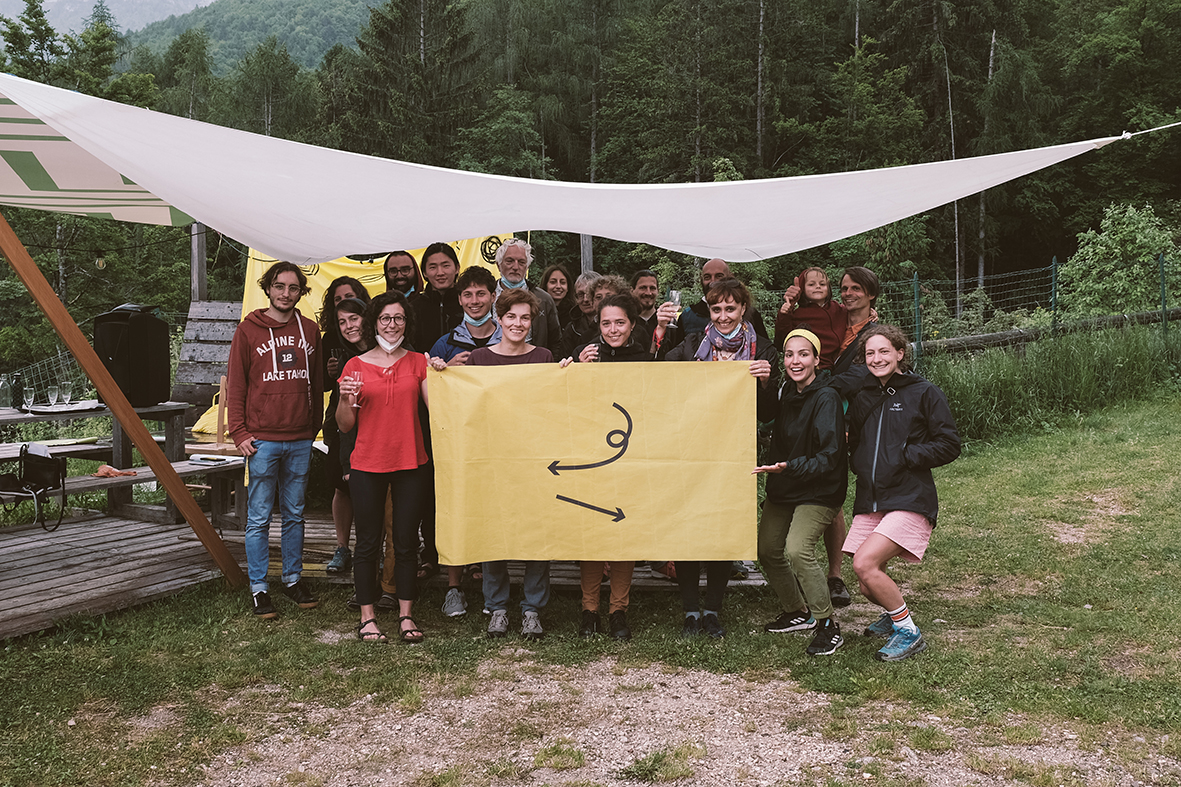
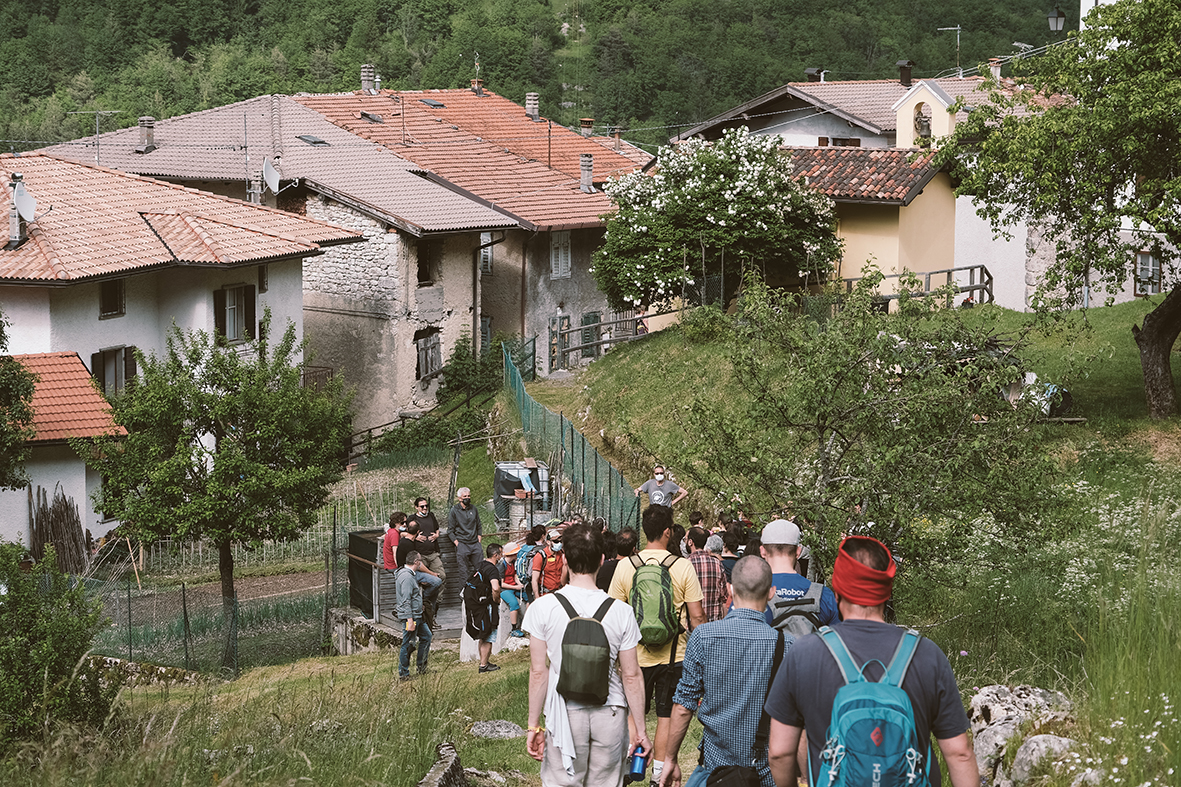
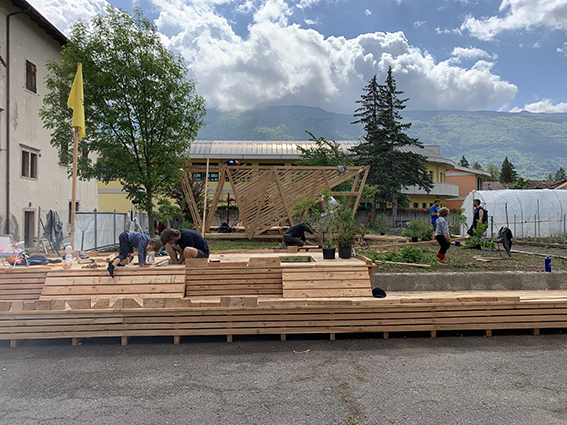
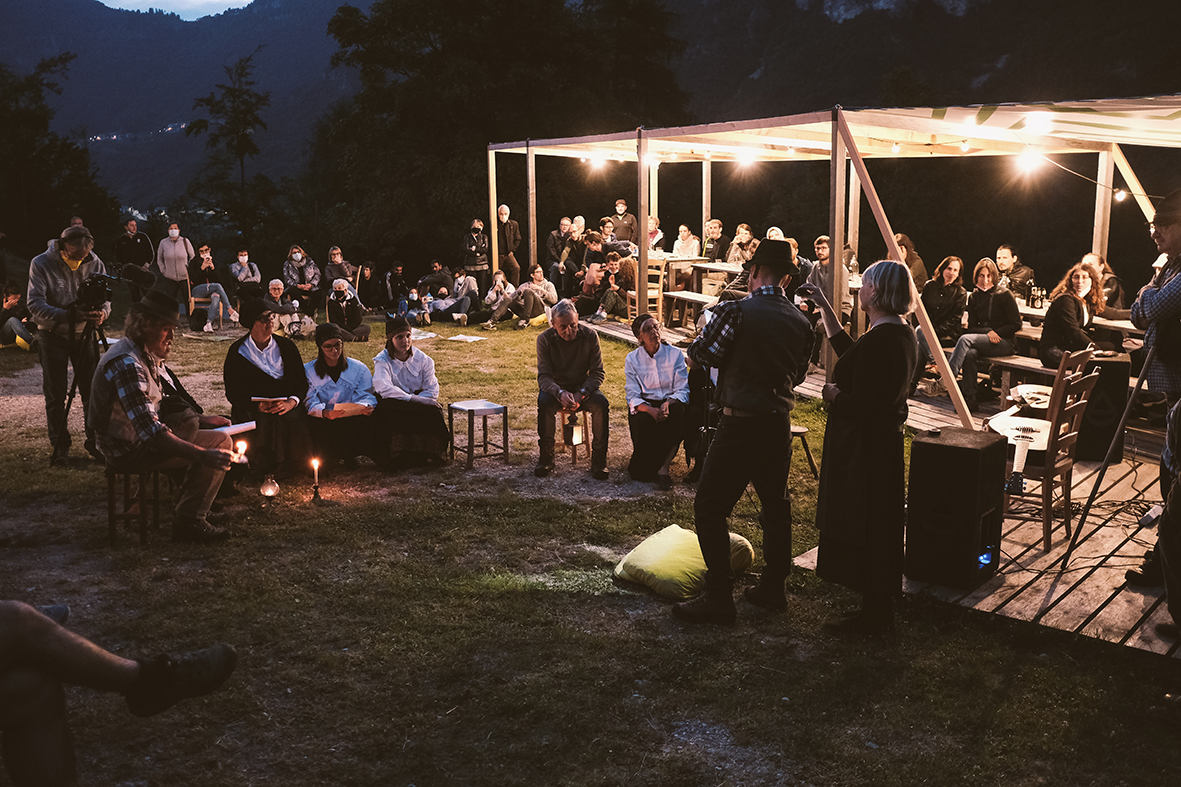
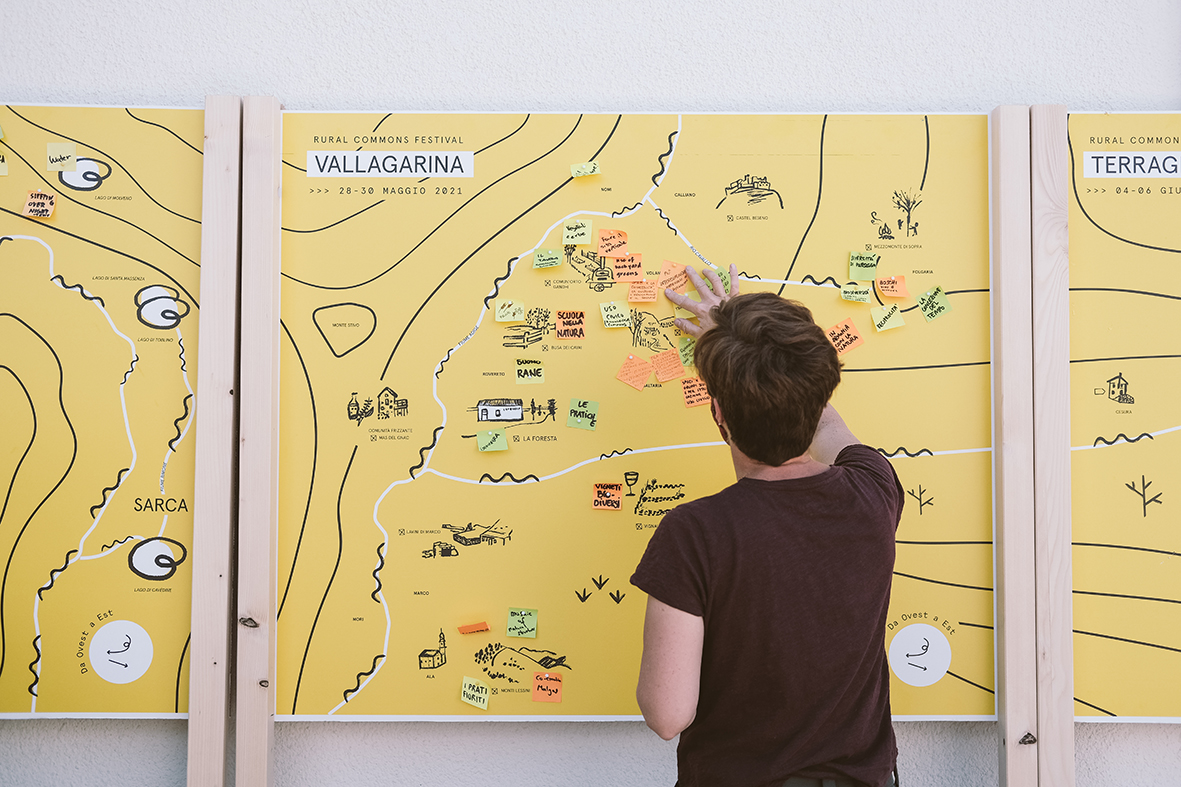
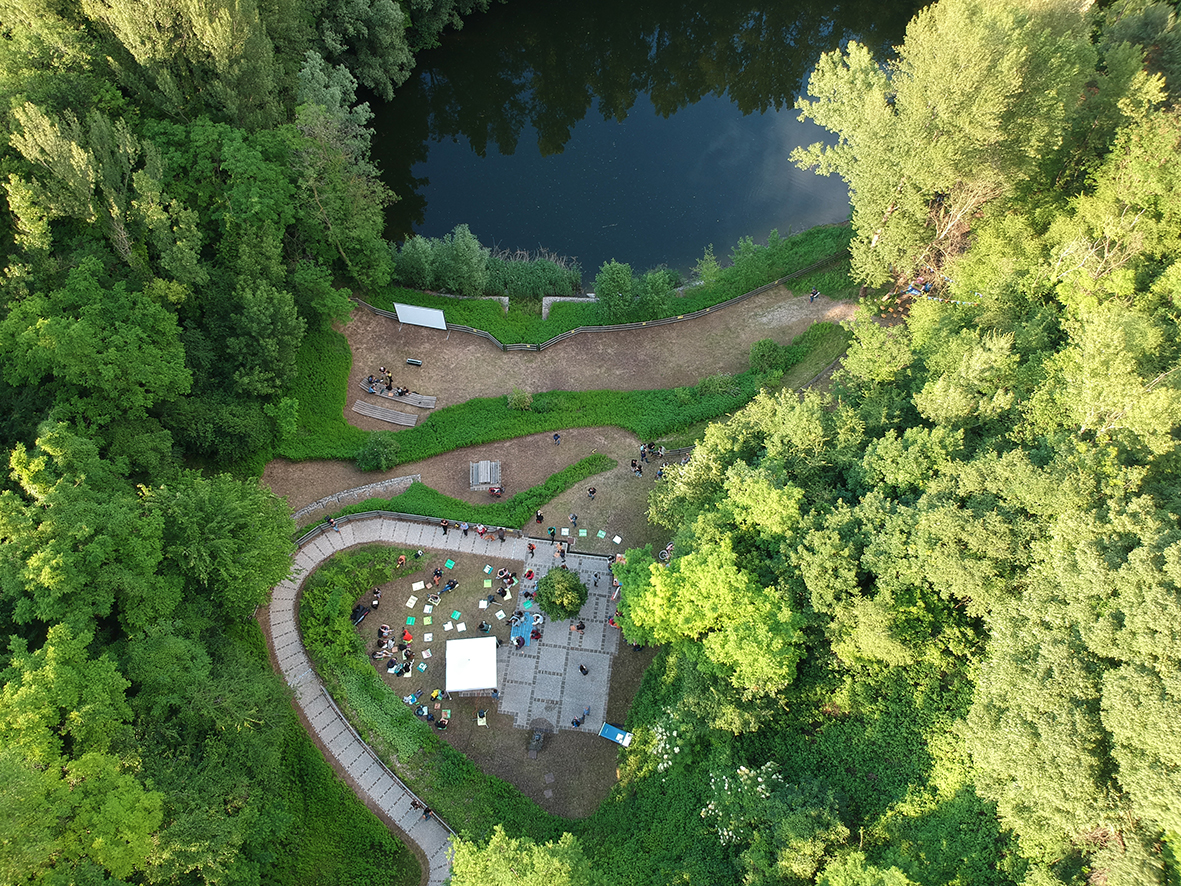
@EURAC Research, 2021
Content licensed to the European Union.